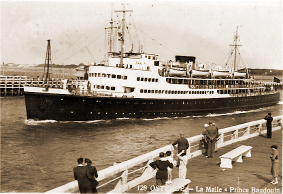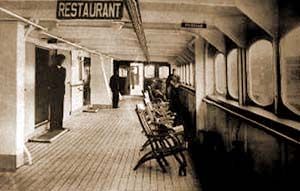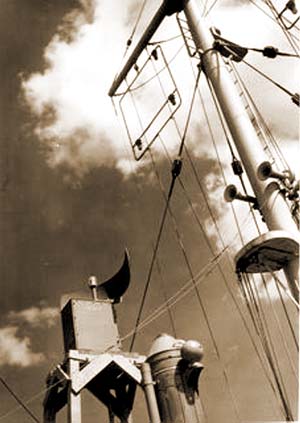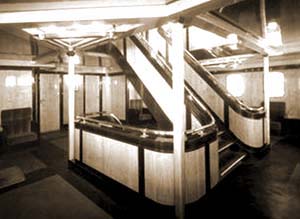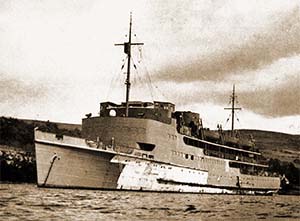In 1931 had het bestuur der Zeewezen reeds de intentie om de nieuwe geplande en te bouwen eenheden te voorzien van de modernste technologie. Met het oog op de reputatie inzake snelste schepen en comfort werd een aanbesteding uitgeschreven om een nieuw schip te bouwen dat aan de nieuwste normen moest voldoen. De visie van het bestuur was heel duidelijk. Men wilde van de stoommotoren af en overgaan tot de nieuwste dieselmotoren.
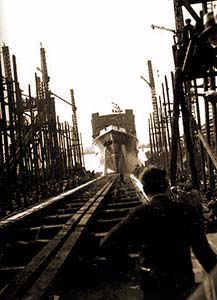
Men ging in diverse landen de voornaamste scheepsbouwers aanspreken. Het was echter Cockerill die als winnaar uit de bus kwam. Ware het mogelijk in België toegewezen aan Cockerill door de heersende economische crisis van die periode en de nood aan het bestrijden van de werkloosheid.
De uitdaging bestond er in om het vaartuig te voorzien van twee SULZER - 12 cilinder (dia 580 mm) dieselmotoren van 8500 PK. Men wilde totaal geen stoommachines meer om zo de rook en stof te vermijden welke door de oudere eenheden werden geproduceerd. Zeg maar eerbied voor het milieu avant la lettre.
Het schip kreeg de naam van de huidig Prins Boudewijn. Gezien dit vaartuig de naam in het frans moest krijgen werd het “PRINCE BAUDOUIN”. Op zaterdag 16 september 1933 liep de Prince Baudouin bij Cockerill van stapel. Stilaan bleek duidelijk dat het vooropgezet doel werd gehaald. Bij de proefvaart haalde het vaartuig een snelheid van 25.25 knopen. Wat daarmee onmiddellijk het snelste schip ter wereld te zijn.Een verslag van de eerste reis werd gepibliceerd in het Visserijblad van 18 augustus 1934.
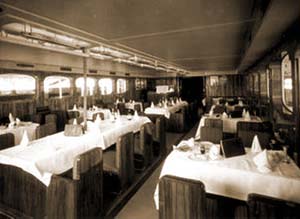
Het bestuur der zeewezen had hiermee een keerpunt in exploitatiekost kunnen verwezenlijken. Het gebruik van diesel vaartuigen bleek een aanzienlijke besparing op te leveren ten opzicht van de stoomturbines. Anderzijds was het comfort een grote stap vooruit. Er waren vijf dekken, vier restaurants, vijf rustsalons en grote wandeldekken. Technisch gezien werd de laatste technologie voor elektrische toestellen voorzien. Zo was er verwarming, verluchting, verlichting, elektrische keuken en de nieuwste davits voor de reddingssloepen. Al dit nieuws werd door een 2000 KW generator voorzien. Ook de brug werd voorzien van de nieuwste navigatietechnologie. De inrichting van het schip werd toevertrouwd aan de welgekende kunstenaar Henry Van de Velde. Het prachtige schip met zijn sierlijke silhouet werd de parel van Belgisch vakmanschap genoemd. En dat was het ook.
De nieuwe motoren bleken in eerste instantie problemen te vertonen wat voeding gaf voor kritiek in de media. We mogen niet vergeten dat dit gebeurde in een periode van repressie en hoge werkloosheid. En dat dit alles op overheidsuitgaven beruste. Op 27 oktober 1934 werd het schip uit dienst gehaald en is bij Cockerill een volledige controle en aanpassing uitgevoerd met de betrokken gespecialiseerde firma’s. In een krantenartikel van 14 november 1934 probeert de toenmalige directeur Haeck dit allemaal uit de doeken te doen. Het was niet eenvoudig om een vaartuig te bouwen met de nieuwste technologie dat allemaal vanaf dag één perfect zou functioneren. Op maandag 26 november 1934 kwam het schip na uiterst bevredigende proeven terug in dienst. De parel kon glinsteren.
WOII
Toen de tweede wereldoorlog uitbrak diende ook de Prince Baudouin samen met de andere eenheden België te verlaten om niet in de handen van de agressor te vallen. Op 18 mei 1940 vertrekt het schip vol geladen naar Le Havre en vervolgens naar Engeland Southampton. Op 28 mei werd ze aan het Ministry of War overhandigd. Waar ze in de eerste helft van juni al deelnam aan de evacuatie van Britse troepen tussen Brest, Southampton, Cherbourg en St Malo. Hierna werd ze in juli 1940 toegewezen aan de Royal Navy om als torpedojager te worden omgebouwd. Dit werd echter in augustus geannuleerd waarna ze tot eind oktober in Southampton is verbleven. Bij vertrek op 1 november 1940 richting Clyde, kwam ze met twee schepen in aanvaring. De SS Mahsud en de SS Graslin. Hierna is ze in Gareloch gebleven tot mei 1941. Waar ze later bij de gebroeders Denny in Dumbarton tot bevoorradingsschip is omgebouwd.
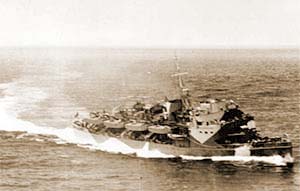
Vanaf 13 augustus 1941 tot 2 december 1941 werd de Prince Baudouin bemand door de General Steam Packet Company en gebruikt als troepentransport en bevoorrading.
Het duurde tot januari 1943 wanneer de Prince Baudouin in Tilbury door de Royal Navy als LSI werd omgevormd. In november 1943 was het schip klaar en kreeg het de nieuwe naam “HMS Prince Baudouin”. De volgende maanden werd er getraind in voorbereiding naar de geplande landingen.
Op 6 juni 1944 landing Omaha Beach. In Juli naar de Middellandse Zee en eind juli in Napels om verder te worden ingezet naar Sicilië en Gilbraltar.
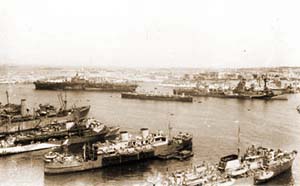
In oktober 1944 werd de Prince Baudouin ontwapend in Greenock in de Loch Fyne waar men een breuk in de transmissie van een generator vaststelde en de herstelperiode geschat op ongeveer 6 maanden. In maart 1945 werd het schip naar Cockerill gestuurd.
In juli 1945 werd ze terug in dienst gezet voor transport tussen Oostende en Folkestone. Even later op 1 oktober werd de Prince Baudouin door het Ministry of War aan de Belgische Staat terug gegeven. Het schip werd terug bij Cockerill omgevormd en heringericht om de normale dienst te kunnen hervatten.
Op 24 juli 1946 kon de Prince Baudouin de speciale overtocht verzorgen naar aanleiding van het honderd jarige bestaan van de lijn. Het duurde tot 1 oktober 1946 voor de het schip voor normale dienst Oostende-Dover terug kon worden ingelegd. De haven van Dover werd pas op 1 oktober 1946 terug vrijgegeven voor commercieel trafiek.
De Prince Baudouin werd na 29 jaar uit de vaste dienst gehaald en op 1 januari 1964 in afwachting tot afbraak verkocht aan Sidmar om als drijvend hotel en burelen dienst te doen voor een constructie firma in Zelzate. In september 1967 kwam het schip in Gent aan voor afbraak.

